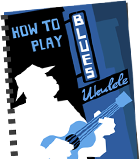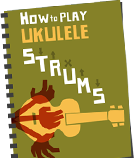As the ukulele market has exploded, competition for sales has got fiercer. It’s interesting to see how various companies have attempted to spread the word. There has been quite a variety of tactics.
Disclaimer: These are my idle musings. Any resemblance to reality is purely coincidental.
Product Lines – Kala
Kala have really pumped out new models. But it’s impressive how they’ve managed to keep an overall identity and, even more importantly, have each new model distinctive and targeted on a specific type of player.
They’re very much lead by what is being demanded. For example, the Acacia tenors are perfect for those who want to be Jake but don’t have the wallet.
They also did a great job of spotting the potential of the Road Toad bass and turning it into a more affordable U-Bass.
It makes life really easy for me because when people ask for a recommendation it’s easy to match their requirements to a specific Kala.
Upside: It’s easy to sell people something they already want.
Downside: You have to keep up with the scene and keep innovating.
Community Building – Mainland
Mainland have done a great job building up passionate followers via their participation in Ukulele Underground and UWC. Those of us outside the gang might be left scratching our heads but why worry about that when there are a bunch of people singing your praises at every opportunity?
Upside: Fiercely loyal customers.
Downside: Takes a long of time and commitment.
Storytelling – KoAloha
How could you not love Alvin Okami? He’s a ripping good storyteller. These stories give the instruments an extra dimension. They give you a much better idea of what the instruments are about and what the makers value. Without the story it would still be the same instrument but it wouldn’t feel so special.
Upside: Cheap and effective way to spread your message. Attracts people that are going to like what you do.
Downside: You have to be an Alvin and really believe in what you’re doing.
Brand Recognition – Fender
With a number of guitarists picking up ukes, Fender have taken advantage of their exceptional good standing in the guitar world to sell some rather less exceptional ukuleles. It’s no coincidence that guitarists like Rivers Cuomo and Baldie off of Train play/smash Fenders.
Upside: Instant trust.
Downside: Takes about 50 years to build up.
Competitions – Bushman and EleUke
Bushman’s ukulele contest has become such an institution that it’s easy to forget they actually make ukuleles. And it certainly helped that they through quality considerationns to the curb and picked Julia Nunes as a winner. She seems to have moved onto Kala but they got plenty of mileage of her.
And having two contests in a row has certainly brought EleUke to the fore. And they need to do some damage control because their ukes certainly used to be crappy (I don’t like mine at all) and ugly (a problem they haven’t entirely overcome: the a 90s throwback and the semi-acoustics are nasty). And I do think the winner of the last contest had a nice performance marred by the sound of the EleUke.
Upside: Cheap and quick.
Downside: Little last effect. The rules you’re supposed to abide by for international competitions are massively complex and regularly broken.
Endorsements – Mya-Moe and aNueNue
Both Mya-Moe and aNueNue have spread their names by getting their instruments in the hands of players. Mya-Moe with the likes of Mumford and Sons and Victoria Vox and aNueNue with The Re-entrants and U900. Both have used this tactic to quickly establish themselves and it’s worked pretty well for them.
A smart move by Moe-Moe is having headstocks that are instantly recognisable a mile off. Even in a video like this you can tell he’s playing a Mya-Moe.
Upside: Quick way to get your name out there.
Downside: Cost and possibly not that effective.



